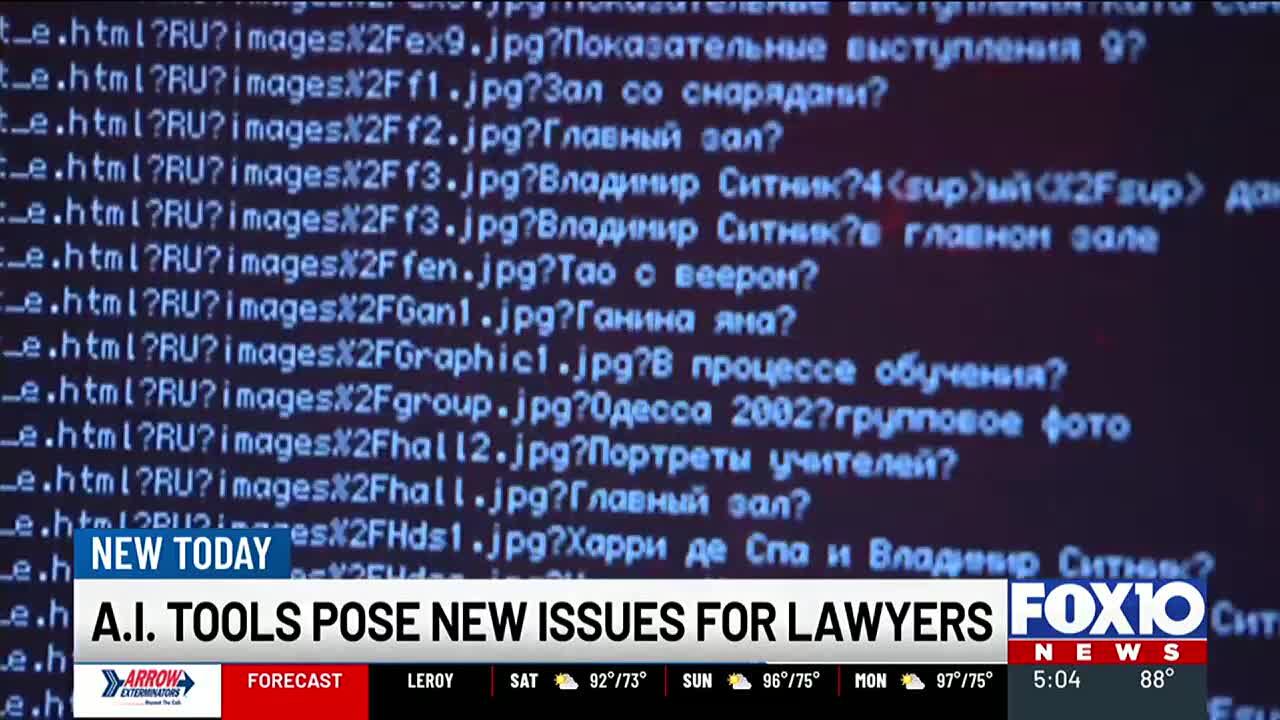The Role of Artificial Intelligence in Modern Legal Practices
For Stephen Yeager, the owner of Divine Litigation Services, artificial intelligence has become a crucial tool in his work. His company provides digital forensics, research, and jury consulting services to lawyers, and he credits AI with significantly streamlining processes that once took hours to complete.
“It’s a next-level tool,” Yeager said. “It basically does things that no other tool can do, and in a very short amount of time—especially in the legal field.”
However, Yeager emphasized that human oversight is still essential when using AI. He mentioned the importance of validating AI-generated content, stating, “One of the AI ethics is, validate, validate, validate.” This caution is especially relevant given recent incidents where lawyers have faced challenges with AI-generated documents.
AI in Legal Cases: A Double-Edged Sword
In Mobile, Alabama, a lawyer representing an alleged drug “kingpin” named Glennie Antonio McGee admitted to submitting a court filing created by a generative AI program that cited “nonexistent” cases. This incident highlights the risks associated with relying solely on AI without thorough review.
Yeager uses AI to help lawyers process large volumes of evidence, which can often run into thousands of pages. For example, in the case of Marco Antonio Perez, who is on death row for killing a Mobile police officer, the legal team received recordings from over 70 witnesses. AI was used to convert these into transcripts, allowing Yeager to quickly determine how many people had seen the officer’s badge and how many gunshots they heard. The results were obtained within 30 minutes, showcasing the efficiency of AI in analyzing complex data.
Advanced Capabilities of AI in Legal Research
Beyond basic transcription, AI can perform higher-order analysis. In a large medical malpractice case, Yeager wanted to identify references to knee surgeries in thousands of medical records. The AI not only found two direct references but also flagged potential mentions by recognizing procedures through their five-digit codes listed in the documents.
Another instance involved a van in a capital murder case in Mobile. An AI query returned 13 mentions of the van and suggested examining other instances of the word “ban,” which the program interpreted as a possible typo in the written documents. These examples demonstrate the ability of AI to uncover patterns and connections that might be missed by human reviewers.
AI in Drafting Legal Documents
Lawyers are increasingly using AI to assist with drafting motions and pleadings. These programs can locate precedents that support a lawyer’s argument and even draft the language itself. James Johnson, for example, used a Microsoft product based on the open-source ChatGPT to help draft a filing seeking to delay McGee’s drug trial. However, prosecutors discovered that some of the cited precedents were not real, underscoring the need for careful verification.
Choosing the Right AI Tools
Yeager noted that while many companies market inexpensive AI legal research programs, some fall short of their promises. More expensive programs, such as those linked to Westlaw and Lexis, are generally more reliable because they use proprietary legal databases and models, distinguishing them from general AI tools like ChatGPT.
Potential Drawbacks and Expert Opinions
Despite its benefits, AI is not without drawbacks. Joe Patrice, senior editor at Above the Law, warned that AI programs may misinterpret legal cases or fail to recognize nuances. “And if you aren’t aware that it’s doing that, and know that you have to check it yourself, you can get burned,” he said.
McGee’s new lawyer, Jason Darley, has chosen not to use AI at all. “If I don’t read it with my own eyes, I don’t trust it,” he said. This approach reflects the ongoing debate about the role of AI in legal practices and the importance of maintaining human judgment in critical decisions.
